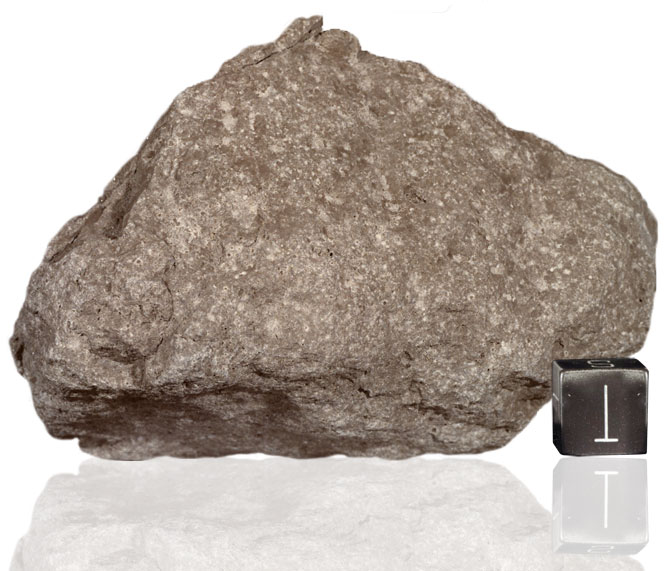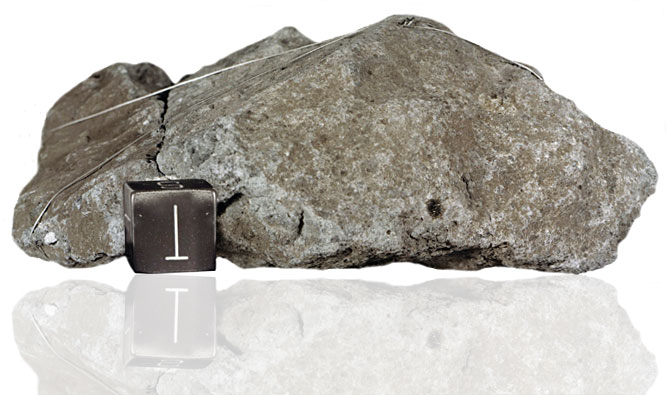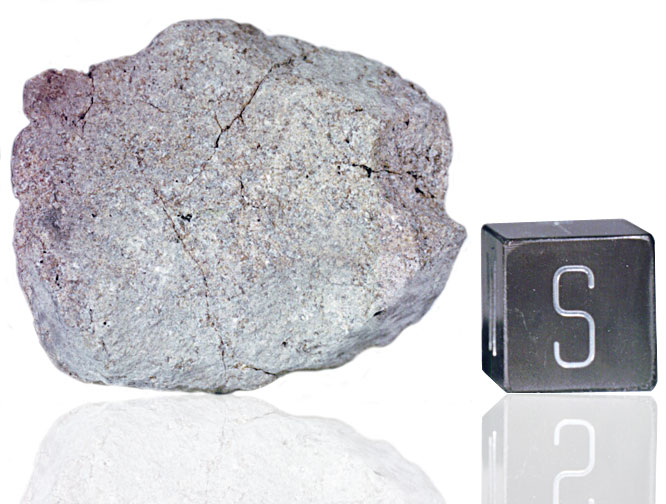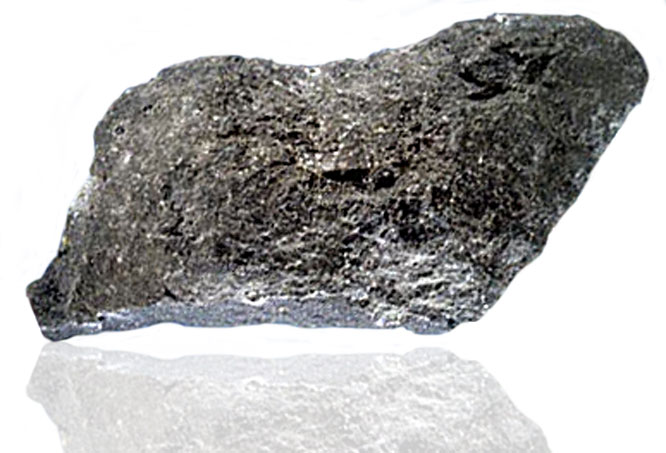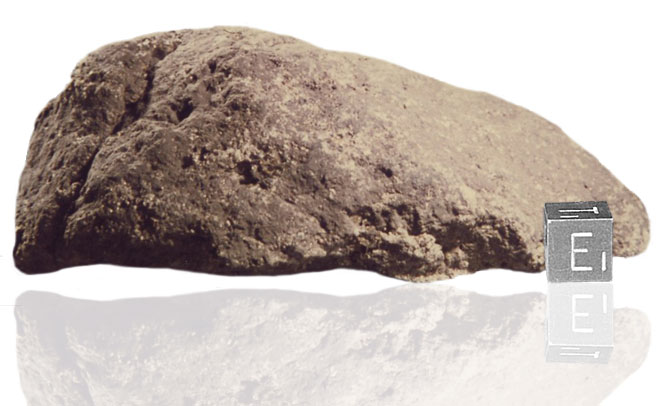12009 - Olivine basalt
Collection:
Moon rocks
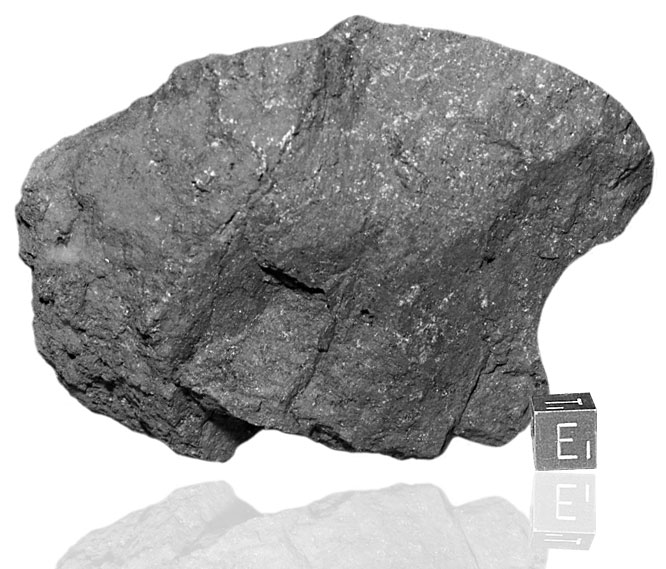
Click the microscope button to view a
thin section for this sample.
MicroscopeClick the microscope button to view a thin section for this sample.
MicroscopeFact sheet
12009 - Olivine basalt
Sample 12009 is an olivine vitrophyre collected during the Apollo 12 mission to the Moon. The rock is rapidly-cooled basalt that formed skeletal crystals in a glass matrix. The sample has been dated at 3.2 billion years, but it was brought to the surface by a meteorite impact much more recently since it has a cosmic ray exposure age of 136 million years.
In thin section, the sample consists of skeletal phenocrysts of olivine (0.3-1.0 millimetres) and pyroxene (0.2-0.8 millimetres) set in a matrix of microcrystalline devitrified glass and small crystals of olivine, pyroxene and illmenite that crystallised from the melt.
Further details of this and other Apollo samples are here: http://curator.jsc.nasa.gov/lunar/
About this collection
Sample details
Type
igneous
Category
mare basalt
Rock-forming mineral
olivine
pyroxene
ilmenite
We would like to thank the following for the use of this sample:

